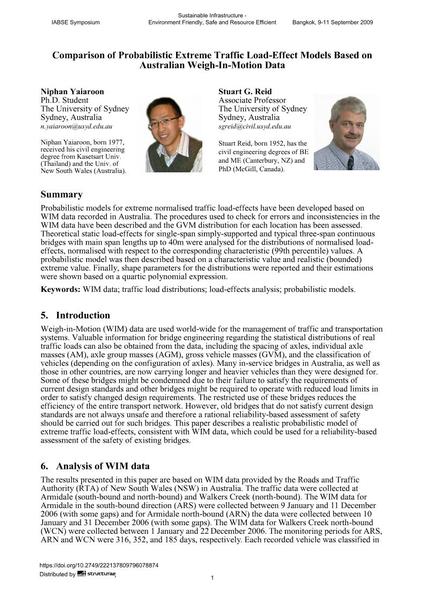Comparison of Probabilistic Extreme Traffic Load-Effect Models Based on Australian Weigh-In-Motion Data

|
|
|||||||||||
Bibliographic Details
| Author(s): |
Niphan Yaiaroon
Stuart G. Reid |
||||
|---|---|---|---|---|---|
| Medium: | conference paper | ||||
| Language(s): | English | ||||
| Conference: | IABSE Symposium: Sustainable Infrastructure - Environment Friendly, Safe and Resource Efficient, Bangkok, Thailand, 9-11 September 2009 | ||||
| Published in: | IABSE Symposium Bangkok 2009 | ||||
|
|||||
| Page(s): | 45-55 | ||||
| Total no. of pages: | 8 | ||||
| Year: | 2009 | ||||
| DOI: | 10.2749/222137809796078874 | ||||
| Abstract: |
Probabilistic models for extreme normalised traffic load-effects have been developed based on WIM data recorded in Australia. The procedures used to check for errors and inconsistencies in the WIM data have been described and the GVM distribution for each location has been assessed. Theoretical static load-effects for single-span simply-supported and typical three-span continuous bridges with main span lengths up to 40m were analysed for the distributions of normalised load- effects, normalised with respect to the corresponding characteristic (99th percentile) values. A probabilistic model was then described based on a characteristic value and realistic (bounded) extreme value. Finally, shape parameters for the distributions were reported and their estimations were shown based on a quartic polynomial expression. |
||||
| Keywords: |
probabilistic models WIM data traffic load distributions load-effects analysis
|
||||
